Green Vegetable Detox Juice Recipe
This Green Vegetable Detox Juice recipe is made with veggies including celery, cucumber, parsley, and leafy greens that are full of antioxidants. This hydrating juice is naturally detoxifying and a great way to start the day!
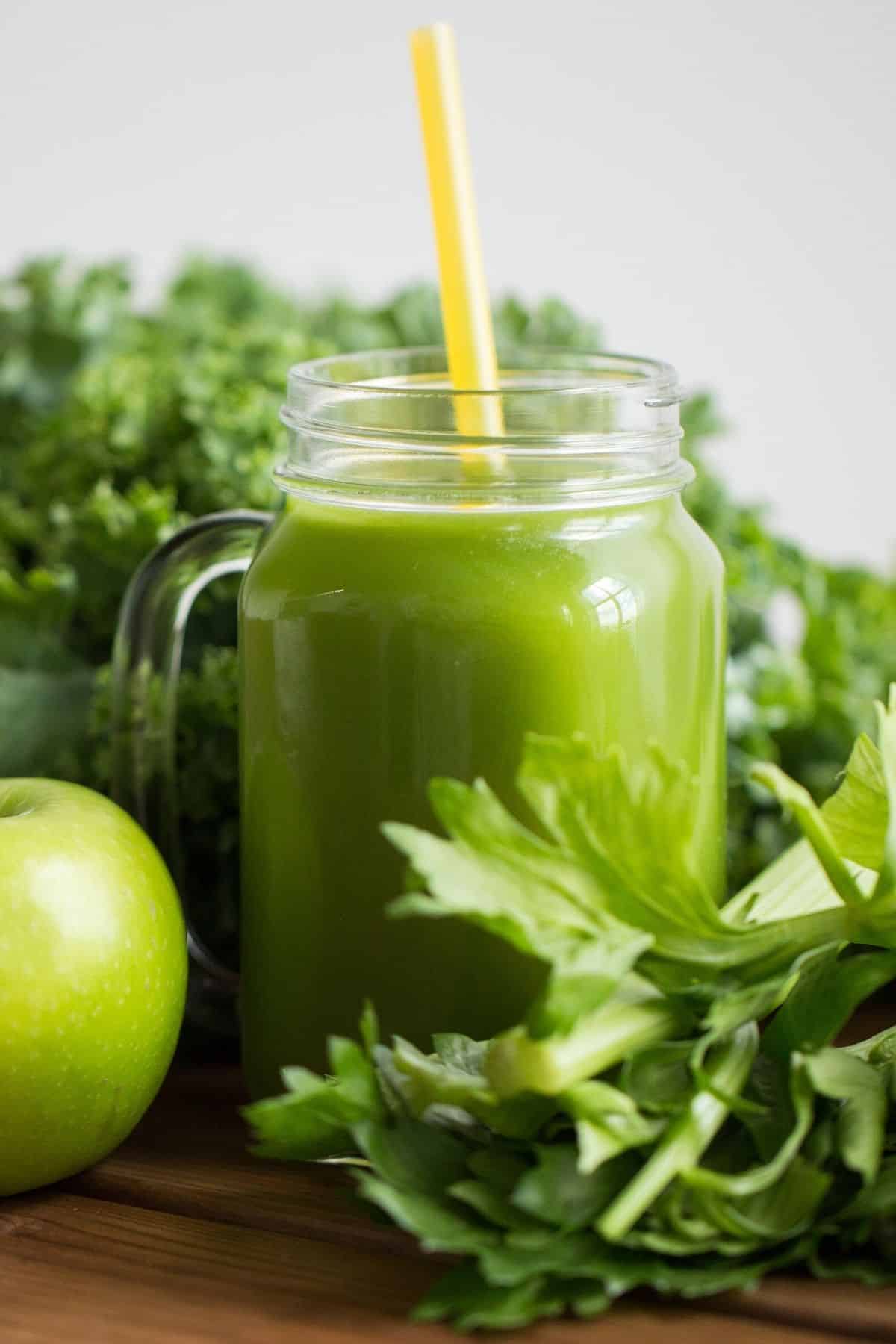
Detoxing with Green Juice
Vegetables are great for supporting the body’s natural detoxification process. Even though juicing removes the beneficial fiber, it’s a great way to get a lot of micronutrients in at one sitting.
Fresh juices made from raw vegetables are generally easier on the digestive system and provide almost all the health benefits but without all the fiber.
There is even research showing that vegetable and fruit juices can help prevent heart disease due to their high content of antioxidants, vitamins, and minerals. Healthy juices can also boost the immune system and are part of a healthy lifestyle!
That said, always check with your healthcare provider to make sure that juices are appropriate for you and your health needs.
- Juicing at home will save you lots of money over the long-run, especially if you drink green juices regularly. Once you invest in a vegetable juicer, you can make as many as you like. I’ve had mine for over 10 years now! See my list of the best juicers.
- This particular combination of vegetables in this detox juice recipe are designed for optimal antioxidant levels and taste. Flat-leaf parsley, kale or spinach, celery, and cucumber are a great combination. Some might even call this a “mean green” juice recipe similar to ones you can find at expensive juice bars and Whole Foods.
- Missing any ingredient? This recipe is very forgiving. You can add more of one and leave out another. Just try to get a nice combination of soft and hard vegetables to help your juicer run efficiently
Detox Juice Ingredients
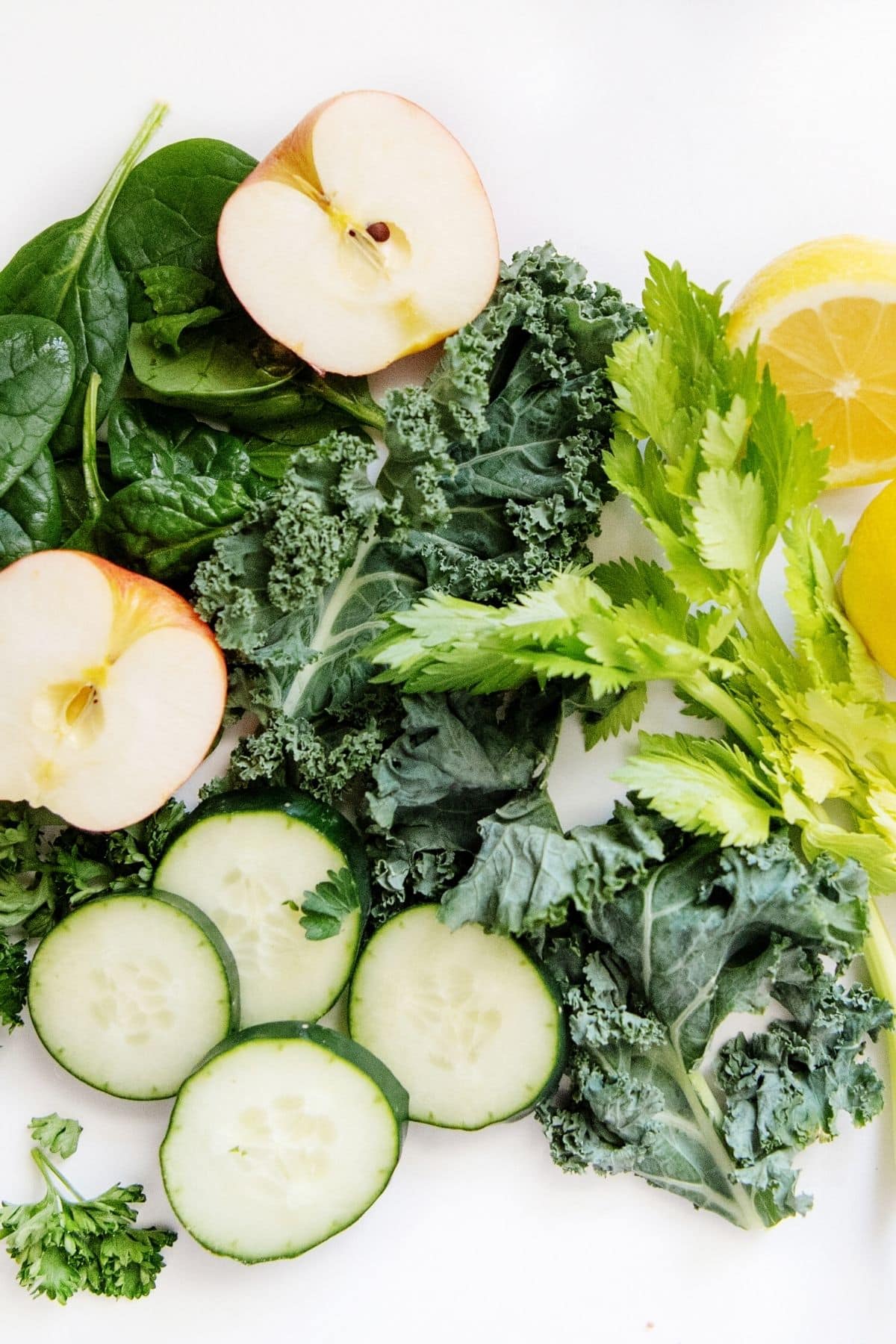
- Celery is one of the most popular ingredients for juice these days. In fact, my Celery Juice recipe is one of the top 3 recipes on my site! If you hate the flavor of celery, just leave it out. But, it’s nice to at least include a few stalks.
- Cucumber is a wonderful vegetable for juicing because it contains so much water. I recommend using an English cucumber.
- Flat-leaf parsley is used around the world for its medicinal properties. Try not to skip this ingredient if you can. You may also like my Parsley Juice recipe!
- Kale or spinach adds even more nutrition and body to this delicious vegetable juice recipe. You may also like this Spinach Juice or Green Apple Juice with similar ingredients.
- Green apple or red apple adds just a touch of sweetness and helps make the green juice enjoyable for your taste buds.
- Fresh lemon adds brightness.
Please see the recipe card at the end of this post for the exact ingredients and measurements.
Recipe Steps
Step One
Once you start juicing at home, you’ll realize that the most time-consuming part of the process is prepping the vegetables. It can take up to 30 minutes to wash and cut the vegetables to be ready to juice.
I try to view washing and cutting vegetables as a meditative process. Or, I throw on my headphones and listen to a great podcast while getting them ready (see my list of the best health podcasts for women).
Please see the recipe card at the end of this post for the exact ingredients and measurements.
Step Two
Now it’s time to get juicing! Turn on your juicer and feed the vegetable pieces into the feeding tube.
Alternate hard and soft pieces to help your juicer run the most efficiently.
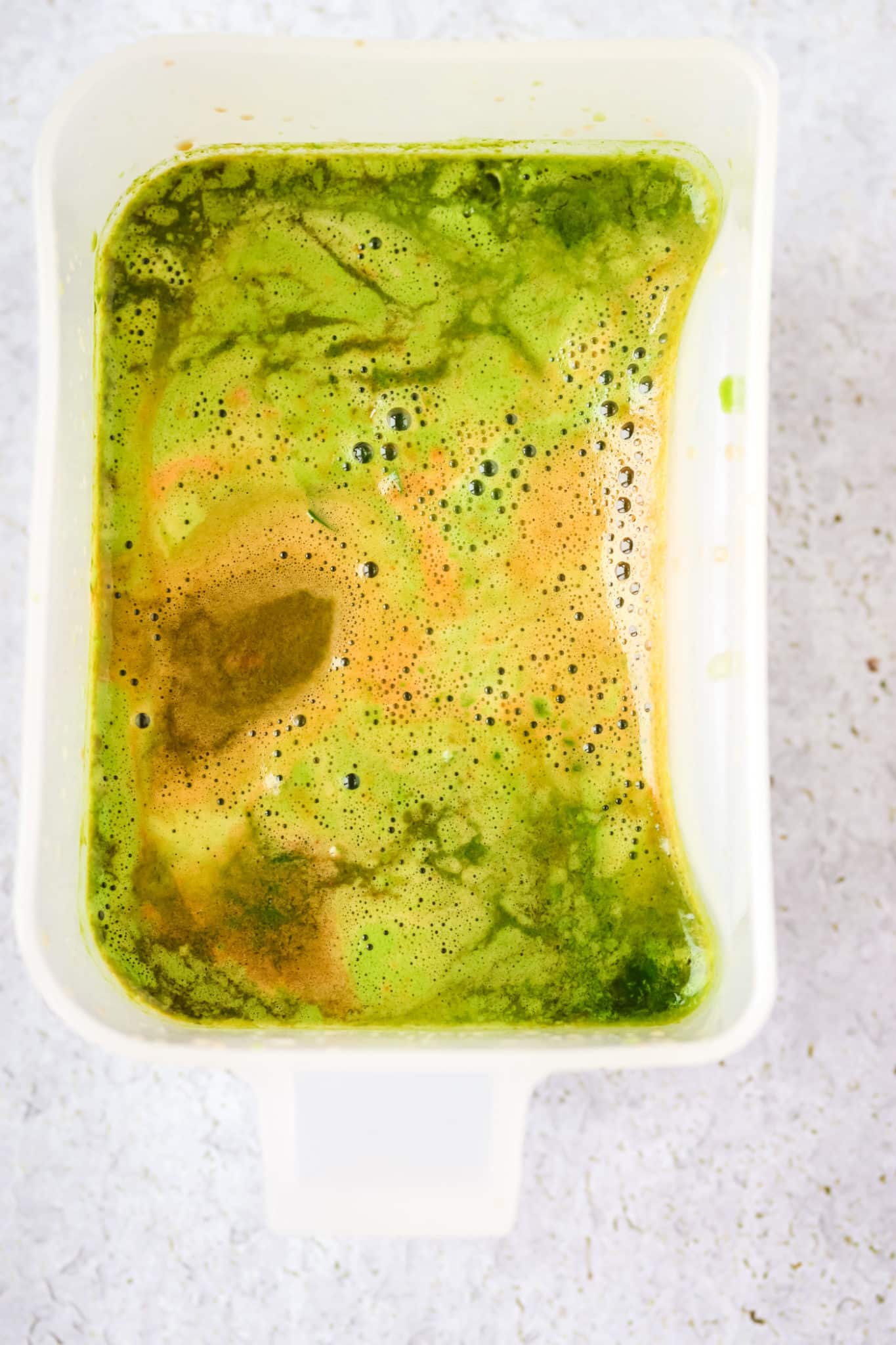
Step Three
Serve your juice! Some people like to drink their vegetable juice on an empty stomach (with the idea being that you can best absorb the nutrients that way), and some people like to serve it with a meal or solid food.
Either way, it’s up to you.
I hope this healthy green juice recipe becomes your new favorite juice combination.
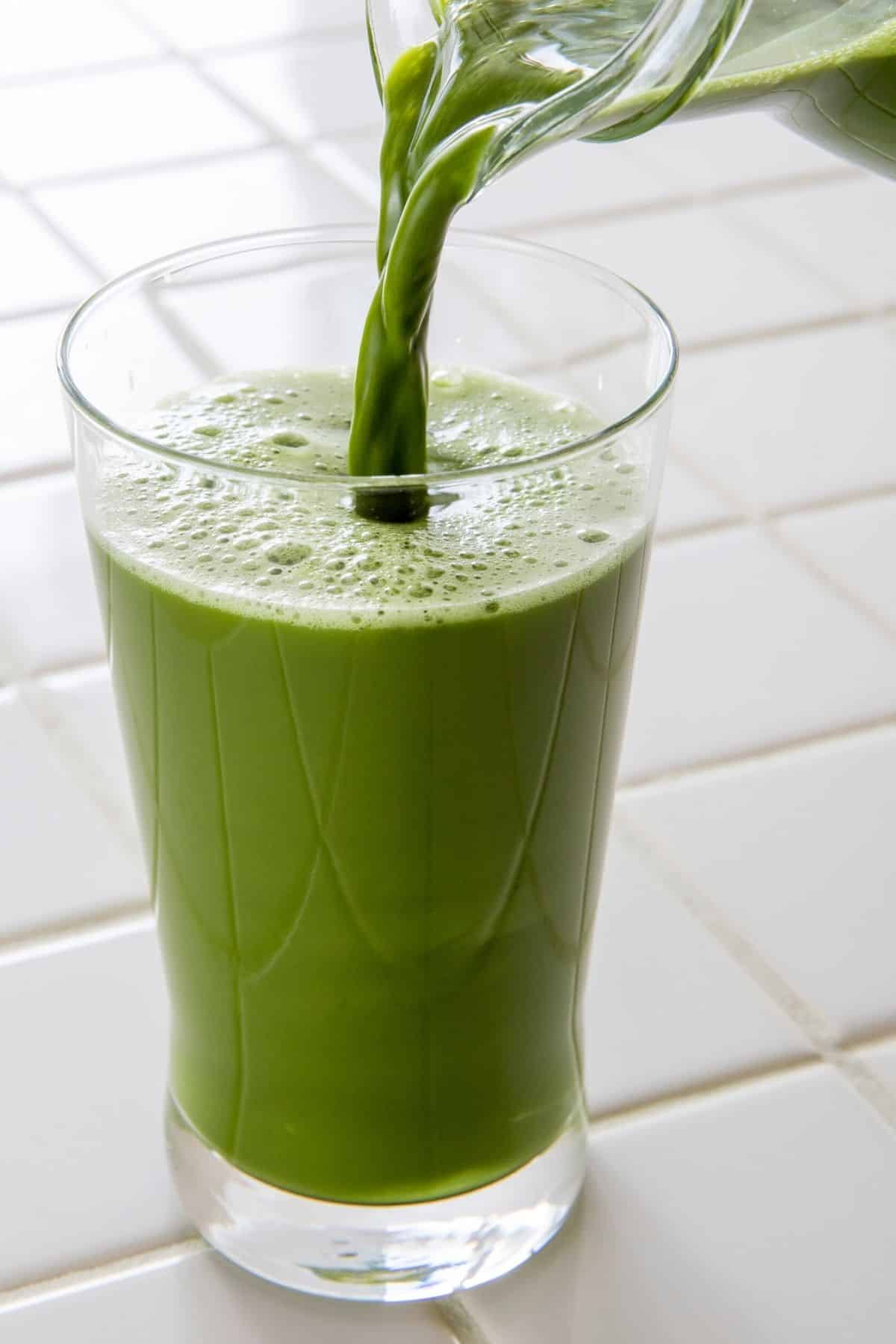
Vegetable Juicing Tips
- You can prep your vegetables for juicing up to 2 days ahead of time. Store your washed and cut vegetables in a covered container in the refrigerator until you’re ready to make the juice.
- Once you have juiced your vegetables, you can store the homemade vegetable juice in a covered jar or pitcher up to 4 days in the refrigerator. But, please note that homemade vegetable juices are best consumed immediately for the most vitamin content, especially vitamin C!
- You can use other vegetables in this recipe depending on what you have or what is in season. Try fennel, cilantro, Persian cucumbers, pears, limes, bell peppers, tomatoes, Swiss chard, collard greens, or broccoli.
- Don’t have a juicer? Try my method for making green juice in a blender. And, don’t miss my list of the best juicer blenders.
Juice Detox FAQs
There is no one best detox diet for everyone. You should speak with your healthcare provider to develop an appropriate diet for your needs. Most people do not need to do a juice detox to obtain health benefits from juicing.
Try adding 1-2 green juices to your regular diet per day to start. Then, you can increase or decrease your juice intake based on your symptoms. Enjoy your vegetables juices with a balanced diet to meet your nutritional needs.
No, folic acid is a synthetic form of folate found in supplement form or fortified foods. Green juices will contain folate from the vegetables.
Yes, but fruit juices will raise your blood sugar more than vegetable juices. The best option is to try and juice mostly vegetables, adding the minimal amount of fruits to help your healthy green juice be palatable.
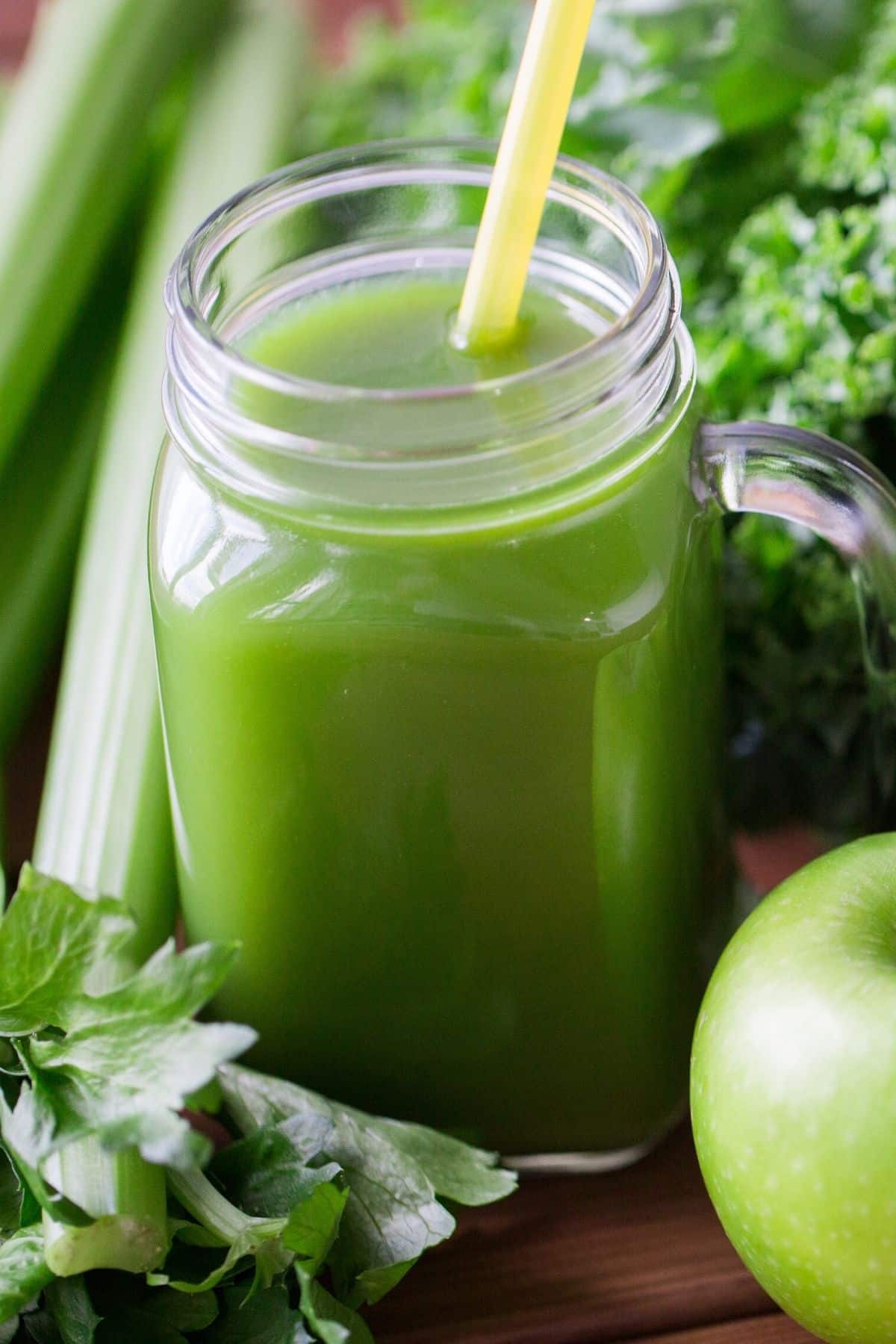
More Vegetable Juice Recipes You Might Like
- Beet Juice or Beet Carrot Juice
- Carrot Juice with Orange & Ginger
- Kale Juice
- Ginger Lemon Shot
- Lemon & Ginger Green Juice
- Anti-Inflammatory Juice
You may also like my round-ups of the best juice recipes for beginners or the best juice recipes for weight loss.
Don’t Miss These Juicing Resources!
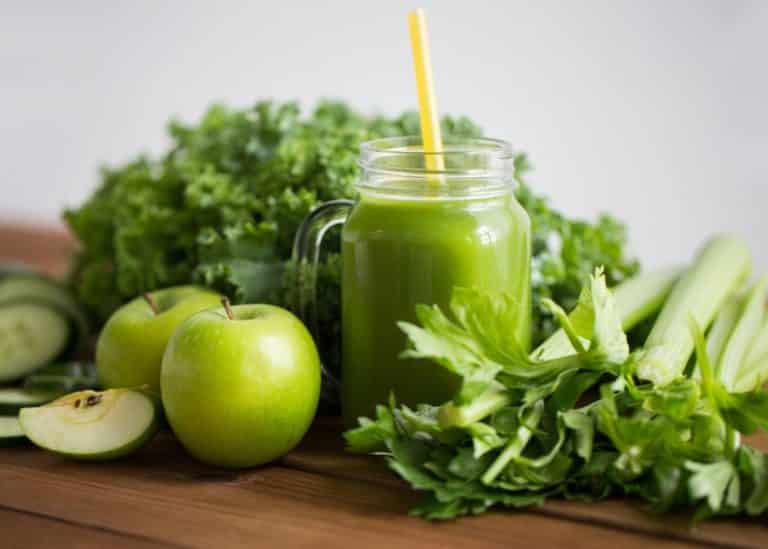
Green Vegetable Detox Juice Recipe
This Green Vegetable Detox Juice recipe is made with veggies including celery, cucumber, parsley, and leafy greens that are full of antioxidants. This hydrating juice is a great way to start the day!
- Total Time: 20 minutes
- Yield: 16 ounces 1x
Ingredients
- 8 celery stalks, from about 1 head of celery
- 1 English cucumber
- 1 bunch flat-leaf parsley
- 3 kale leaves or 1 handful of baby spinach
- 1 green apple
- 1 lime or lemon, skin removed
Instructions
- Wash and chop vegetables so they will fit through the tube of a masticating juicer.
- Feed in the vegetables through the tube, alternating hard and soft-textured ones to help facilitate the juicing process.
- Enjoy immediately or keep the leftovers in a tightly sealed container in the refrigerator.
Notes
- You can prep your vegetables for juicing up to 2 days ahead of time. Store your washed and cut vegetables in a covered container in the refrigerator until you’re ready to make the juice.
- Once you have juiced your vegetables, you can store the homemade vegetable juice in a covered jar or pitcher up to 4 days in the refrigerator. But, please note that homemade vegetable juices are best consumed immediately for the most vitamin content, especially vitamin C!
- You can use other vegetables in this recipe depending on what you have or what is in season. Try fennel, cilantro, Persian cucumbers, pears, limes, bell peppers, tomatoes, Swiss chard, collard greens, or broccoli.
- Don’t have a juicer? Try my method for making green juice in a blender. And, don’t miss my list of the best juicer blenders.
- Prep Time: 15 minutes
- Cook Time: 5 minutes
- Category: Juice
- Method: Juicer
- Cuisine: Healthy
- Diet: Vegan
Nutrition
- Serving Size: 8 ounces
- Calories: 42
- Sugar: 7.2 g
- Sodium: 20.2 mg
- Fat: 0.1 g
- Saturated Fat: 0 g
- Carbohydrates: 10.9 g
- Fiber: 1.6 g
- Protein: 0.7 g
- Cholesterol: 0 mg
Don’t forget to join my newsletter list to get exclusive clean eating recipes and tips. The newsletter is 100% free with no spam; unsubscribe anytime.
About the Author: Carrie Forrest has a master’s degree in public health with a specialty in nutrition. She is a top wellness and food blogger with nearly 10 million annual visitors to her site. Carrie has an incredible story of recovery from chronic illness and is passionate about helping other women transform their health. Send Carrie a message through her contact form.
Note: this post is for informational purposes only and is not intended as medical advice. Please consult your healthcare provider for recommendations related to your individual situation.


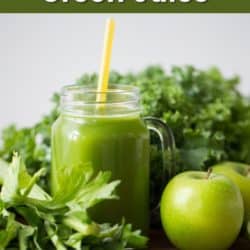
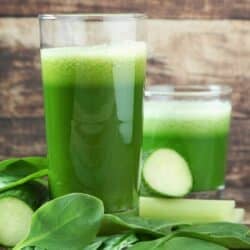
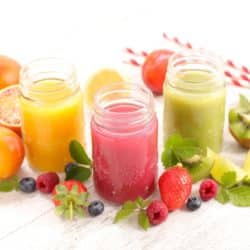
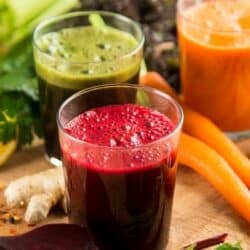
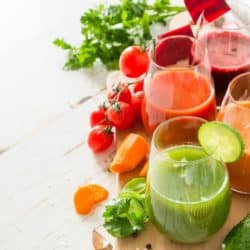



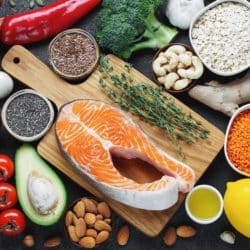

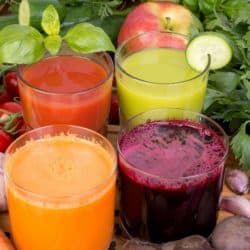


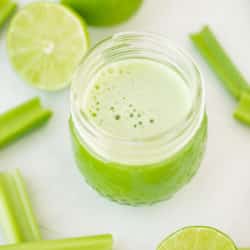




Some of my recipes call for ginger and recommend peeling the ginger. Is it necessary to peel the ginger?
It is personal preference. I always peel my ginger.
I wanted to ask if this helps with weight loss.
I have hormonal imbalance which leads to weight gain, mood swings and tiredness.
Can this help me loose weight and bloating? I also exercise.
Great choice…can you drink warm or heat it up?
This drink is best served cold.
Could I make this detox juice in my Vitamix?? Would I need to add water? Thank you!! I really have been enjoying reading through your site!
You might need a teensy bit of water to get the mixture going, and then you can just strain it through a cheesecloth. Thanks, Shanna!
I have printed this recipe up and will be giving this a try for sure. I would rather detox using all natural veggies like this than use a man made product. Cannot wait to give it a try and thank you for sharing!
Vegetable Detox Juice is the juice that I need now. After the winter and spring, I need to prepare and detox my body for summer.
I’m not a huge fan of juicing but it’s so healthy for you. I need to juice more often that is certain.
What is the best time to consume and how many days in a week can be consumed this detox juice?
That’s an individual choice. I usually drink mine before a meal.
Thank you for the recipe. I will make this for Will as he has recently shown interest in juicing.
Very healthy recipe
One of my favorite juice recipes.